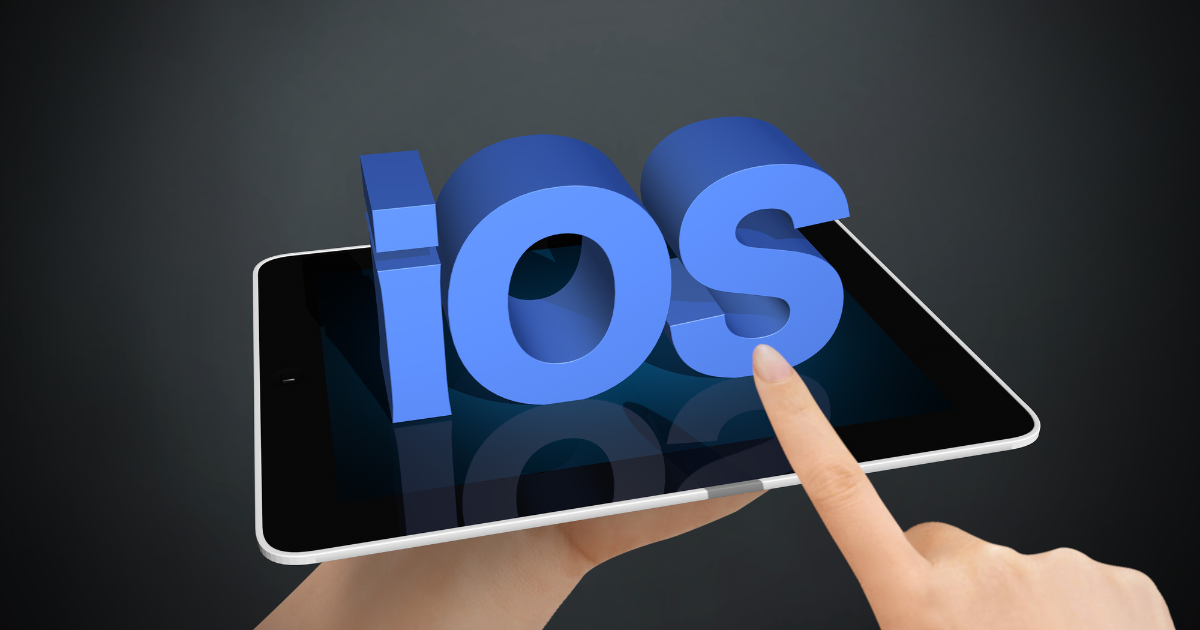Android vs iOS Development: A Quick Comparison for Developers
In the world of mobile app development, the choice between Android vs iOS development can be a daunting one. iOS app developers use Swift, whereas Android app developers use Java or Kotlin, making them both masters in the field of App development.
Both platforms have their strengths and weaknesses, and choosing one over the other can have a significant impact on the success of your app.
As a developer, you need to weigh factors such as market share, user demographics, design guidelines, and development tools. In this comprehensive guide, we will explore the differences and similarities between Android and iOS development and provide insights into how to make an informed decision.
Whether you’re a seasoned developer or just starting out, this guide will help you navigate the complex landscape of mobile app development and choose the right platform for your next project.
Table of Content
- Feature and Development tools
- Market Share and User Demographics
- App Monetization in Android apps
- App Monetization in iOS Apps
- Security and Privacy
- Performance and User Experience
- Development Challenges and Best Practices
- Design Guidelines and UI/UX Considerations
- Enterprise App Development
- Future Trends and Predictions
- Final Thoughts
Features and Development tools
When it comes to developing a mobile app, choosing the right platform is critical. Android and iOS are the two most popular mobile platforms, and both have their own unique features and tools.
For Android development, the primary programming language is Java, but Kotlin is also gaining popularity. Android Studio is the official Integrated Development Environment (IDE) for Android development, which provides developers with full access spotlight a wide range of tools and features such as: source code, completion, debugging, and performance analysis.
On the other hand, Apps made for the Apple App Store differ in various ways from apps made for the Google Play Store: Developers use different programming languages when developing for iOS versus developing for Android.
iOS development primarily uses Swift, a powerful and easy-to-learn programming language developed by Apple. Xcode is the official IDE for iOS development, offering developers access to a range of tools, including a visual editor for creating user interfaces, code highlighting functionality, and debugging features.
When it comes to access to development frameworks, google’s Android side offers a range of options such as Android SDK, Android NDK, and Xamarin, whereas iOS development primarily relies on Apple’s own frameworks such as UIKit, Core Data, and Core Location.
So, whether you prefer Java or Swift, Android Studio or Xcode, there are plenty of options available to developers on both platforms. This, the option between Android and iOS will lie upon the project requirements, target audience, and personal preferences of the developer.
Market Share and User Demographics
Let’s start by looking at the numbers. According to Statcounter’s data from 2021, Android holds the lion’s share of the global mobile operating systems and system market with a staggering 72.91%, while iOS accounts for 26.29%. This means that if you’re targeting a global audience, Android users would be the go-to platform for your app.
However, market share doesn’t tell the whole story. When it comes to user demographics, iOS has a strong foothold in the high-end smartphone market. This is because Apple’s iPhone models are priced at a premium, which means that the majority of iOS users belong to the higher-income bracket.
On the other hand, Android devices come in various price ranges, making it accessible to a wider audience than apple devices. This means that if your app is targeting a specific demographic, such as those who are more likely to own a first phone or high-end smartphone device, iOS may be the way to go.
Moreover, the regional differences in market share and user demographics also play a significant role in the app development strategy. For instance, Android has a more significant market share in Asia, Africa, and South America, while iOS dominates in North America, Europe, and Oceania.
Ultimately, while Android’s name may have the upper hand in global market share, it’s crucial to consider user demographics and regional differences when choosing the platform for your app.
App Monetization in Android Apps
Mobile app development is not just about creating an app, but also about making it a commercial success. In other words, developers need to make sure that their hard work pays off by finding ways to monetize their apps. This is where app monetization strategies come into play.
Fundamentally, you’ll have to work in different programming languages to build your app for each operating system. It’s broadly acknowledged that the programming languages used to develop iOS apps natively are easier to learn and master than those used for Android apps, which makes developing an iOS app easily.
iOS apps and Android apps require different budgets and maintenance tasks. When it comes to Android vs iOS development, both platforms offer a wide range of customization options and monetization strategies.
The developers of Android apps require the option to monetize their apps through in-app purchases, in-app ads, and subscriptions. In-app purchases are popular among game developers, as they allow players to purchase additional content or upgrades within the app.
In-app ads are also a popular way to monetize apps. This is because they allow developers to earn revenue by displaying ads to users. And finally, subscriptions are a popular way to monetize apps that offer ongoing services, such as news or entertainment.
App Monetization in iOS Apps
On the iOS platform, developers can monetize their apps through in-app purchases, in-app ads, and subscriptions, just like on Android. However, iOS also offers a unique monetization strategy for native apps called “freemium”.
This strategy involves offering the app for free, but charging users for additional features or content within the app. This strategy has been highly successful on the iOS platform, with popular apps like Candy Crush and Clash of Clans earning millions of dollars in revenue through the freemium model.
In addition to these monetization strategies, both Android and iOS also offer developers the ability to sell their apps on their respective app stores. Developers can set the price for their app and earn revenue every time someone downloads it.
However, it’s worth noting that competition is fierce in both app stores, and getting noticed among the millions of other apps can be a challenge.
Security and Privacy
Security and privacy are two critical factors that should never be overlooked when developing an app. Users trust apps with their sensitive information, and any breach in security or privacy can result in significant reputational damage and loss of user trust.
In the case of Android app development vs. iOS app development, both platforms have their own security and privacy considerations. For example, Android apps are typically more susceptible to malware and hacking attempts due to the open nature of the platform, while iOS apps are generally considered more secure due to the closed nature of the platform and the rigorous app review process.
However, it’s important to note that neither platform is completely immune to security threats. Developers must take proactive measures to secure their apps, such as using encryption, implementing secure authentication mechanisms, and keeping up with the latest security updates.
Privacy is another critical consideration for mobile app development. Users expect their data to be kept private and secure, and any violation of this trust can lead to significant consequences.
Developers must be transparent about the data they collect, how it is used, and who it is shared with. They should also implement privacy controls that allow users to control access to their data and opt-out of data sharing if desired.
Therefore, security and privacy of cellular data are critical considerations for mobile app development on both Android and iOS platforms. Developers must take proactive measures to secure their apps and protect user data, while also being transparent about data collection and usage to maintain user trust.
By prioritizing security and privacy, developers can create apps and web pages that are both secure and trustworthy, leading to increased user satisfaction and success in the app market.
Performance and User Experience
Performance, and user experience are two critical factors that can make or break the success of an app in the battle of development. After all, users expect apps to be fast, responsive, and easy to use, regardless of the platform they are using.
In the case of Android vs iOS development, there are several factors that can impact the performance and user experience of an app.
For example, Android devices come in a variety of shapes and sizes, with varying hardware specifications and software configurations, which can make it more challenging to optimize app performance across all devices.
On the other hand, iOS devices are generally more standardized, which can make it easier to optimize performance, but may also limit design flexibility.
Another factor to consider is design guidelines and user interface (UI) considerations. Both Android and iOS have their own design guidelines and UI patterns that developers should follow to ensure a consistent and intuitive user experience.
However, there are also differences in these guidelines that developers should be aware of when designing apps for each platform. In terms of optimizing app performance, there are several strategies that developers can use, such as caching data, reducing network requests, and optimizing resource usage.
Additionally, it’s important to test apps thoroughly across different devices and under different conditions to identify and address any performance issues before releasing the app to the public.
Ultimately, when it comes to performance and user experience in Android vs. iOS development, the key is to strike a balance between optimizing for the unique characteristics of each platform while still delivering a consistent and high-quality user experience. By doing so, developers can create apps that are both high-performing and enjoyable to use, regardless of the platform.
Development Challenges and Best Practices
Android vs iOS development comes with its own set of challenges that developers need to overcome to create successful applications. Some of the most common challenges that developers face include:
1. Android Devices Fragmentation
Android devices come in a wide range of screen sizes, resolutions, and hardware configurations, which can make it difficult to ensure that the app works seamlessly across all devices.
2. Design Guidelines
Each platform has its own unique design guidelines, and developers need to ensure that their app adheres to these guidelines to create a cohesive user experience.
3. Platform-specific Features
Both platforms have their own unique features and capabilities, and developers need to be familiar with these features to take full advantage of them.
4. Security
Security is a major concern for mobile app development, and developers need to ensure that their app is secure and protects user data.
To overcome these challenges, developers can follow a number of best practices:
1. Testing
Testing is an essential part of app development, and developers should test their apps across a variety of devices, platforms, and network configurations to ensure that they are functioning properly. They can also use automated testing tools to speed up the testing process.
2. Debugging
Debugging is the process of identifying and fixing bugs or errors in the app code. Developers can use debugging tools like Xcode for iOS and Android Studio for Android to identify and fix issues quickly.
3. Optimization
App optimization involves reducing the size and complexity of the app to improve performance and reduce load times. Developers can achieve this by using efficient coding practices, minimizing the use of resources, and reducing unnecessary features.
4. User Feedback
Developers should actively seek feedback from users throughout the app development process to identify areas for improvement and ensure that their app meets user expectations.
5. Collaboration
Collaborating with other developers, designers, and stakeholders can help ensure that the app meets the needs of all stakeholders and is delivered on time and within budget.
By following these best practices, developers can overcome the challenges of Android vs iOS development and create successful, high-quality applications that meet the needs of their target audience.
Design Guidelines and UI/UX Considerations
Designing mobile apps? The guidelines and UI/UX considerations are crucial factors to consider. The design of your app can make it a success, and understanding the differences between Android and iOS platforms is key to creating a great user experience.
One of the most significant differences between Android and iOS is their design language. Android apps tend to follow a more flexible and customizable design, whereas iOS apps have a more standardized, sleek, and minimalist design.
When it comes to navigation patterns, Android apps tend to have a more complex navigation system, with options for a navigation drawer, tabs, widgets, and more. In contrast, iOS apps usually have a simpler navigation structure, with a tab bar and a back button.
Screen and lock screen layouts are also crucial factorS in app design. While both Android and iOS offer flexible screen layouts, the main difference is that iOS apps tend to have a more standardized layout, with specific guidelines for screen sizes and resolutions. In contrast, Android apps offer more flexibility, with support for various screen sizes, ratios, and resolutions.
Design elements are also a crucial consideration in app design. Android apps tend to have more vibrant colors, custom icons, and widget support, while iOS apps typically have a more minimalist design with more subtle colors and flat icons.
When designing your app for Android or iOS, it’s essential to consider these design guidelines and UI/UX considerations. By understanding the differences between the two platforms, you can create a user experience that is tailored to your target audience and provides the best possible user experience.
Ultimately, a great design can make your app stand out from the competition and contribute to its success.
Enterprise App Development
Mobile apps have become an essential tool for businesses of all sizes to engage with their customers, streamline their operations, and boost their productivity. As a result, enterprise app development has become a lucrative market for mobile app developers, with Android and iOS leading the way.
Enterprise app development presents unique challenges and considerations that are not present in consumer-facing apps. For example, enterprise apps often require more robust security features to protect sensitive data, as well as integration with existing business systems and processes.
Additionally, enterprise apps must be easy to deploy and manage across a wide range of devices and operating systems. On Android, developers can take advantage of the Android Enterprise program, which provides a set of tools and APIs for building, deploying, and managing enterprise apps.
Android Enterprise also offers features such as app configuration and app management, which allow IT administrators to remotely configure and manage apps on employee devices.
On iOS, developers can use the Apple Developer Enterprise Program, which provides tools and resources for building and distributing in-house apps within an organization.
The program also includes features such as mobile device management (MDM) and app distribution, which make it easy to deploy and manage enterprise apps on employee devices. When developing enterprise apps for Android and iOS, it’s important to consider factors such as security, scalability, and ease of deployment.
Additionally, developers must ensure that their apps meet the specific needs and workflows of the organizations they are building the app for. This may require close collaboration with business stakeholders and IT teams.
Future Trends and Predictions
The future of mobile app development is always exciting and unpredictable. With new technologies emerging and user expectations changing, developers need to stay up-to-date on the latest trends and predictions to keep their apps relevant and competitive.
One of the most significant trends in the future of mobile app development is the increasing use of artificial intelligence (AI) and machine learning (ML) to enhance user experiences. AI and ML can help developers create more personalized and context-aware apps that adapt to user behavior and preferences.
Another trend that is gaining momentum is the integration of virtual and augmented reality (VR/AR) technologies in mobile apps. VR and AR can transform the way users interact with mobile apps and websites, making them more immersive and engaging.
Moreover, as the world becomes increasingly connected, mobile apps are likely to integrate with other devices and platforms, including wearables, smart homes, and the Internet of Things (IoT). Developers will need to adapt their apps to work seamlessly across different devices and platforms, leveraging the power of APIs and cloud computing.
Finally, the future of mobile app development is also likely to be influenced by the changing app market and user expectations. With users demanding more personalized and intuitive experiences, developers need to focus on creating apps that are easy to use, visually appealing, and optimized for performance.
Overall, keeping up with the latest trends and predictions in mobile app development is crucial for developers who want to stay ahead of the curve and create apps that stand out in a crowded marketplace. By staying informed and adapting to the changing landscape, developers can create engaging and innovative apps that meet the evolving needs of users.
Final Thoughts
Now that we’ve explored the various facets of Android and iOS development, you might still be wondering which platform is right for your app development goals
Before we dive into our final recommendations, let’s recap some of the key takeaways from our comparison:
- Android development offers more flexibility and customization, while iOS development provides more consistency and control over hardware and software.
- Android has a larger market share, particularly in emerging markets, while iOS has a more affluent user base with higher spending power.
- App monetization strategies are available for both platforms, but developers should be aware of the different revenue models and app store regulations.
- Security and privacy considerations are critical for both platforms, with Android being more susceptible to malware attacks and iOS being more regulated by Apple’s App Store policies.
- Performance and user experience depend on a variety of factors, including hardware fragmentation, device capabilities, and design guidelines.
- Development challenges and best practices apply to both platforms, and developers should prioritize testing, debugging, and optimization to ensure app quality and performance.
- Design guidelines and UI/UX considerations differ between Android and iOS, with Android focusing on customization and iOS prioritizing consistency and simplicity.
- Enterprise app development on both platforms requires careful consideration of security, deployment, and management.
- Finally, the future of Android and iOS development is evolving rapidly, with new technologies, changing user expectations, and emerging markets shaping the landscape.
So, with all of this in mind, which platform should you choose for your app development needs? As with many things in life, it depends on your specific goals and target audience.
Unlike Android, which offers “open source code,” iOS offers closed source code, also referred to as proprietary code.
If you prioritize customization, flexibility, and a larger market share, Android may be the right choice for you. On the other hand, if you value consistency, simplicity, and a more affluent user base, iOS might be the way to go.
Ultimately, the key to success in Android and iOS development is to stay up-to-date with the latest trends, best practices, and user expectations. By keeping these factors in mind and adapting your app development strategies accordingly, you can create successful, engaging, and innovative mobile apps that resonate with users on any platform.
Frequently Asked Questions
What is the difference between Android and iOS development?
Android and iOS are two different mobile operating systems. Android is developed by Google and is an open-source platform, while iOS is developed by Apple and is a closed-source platform. iOS apps can be developed using Swift or Objective-CAndroid apps can be developed using Java or Kotlin, while .
Which platform is more popular, Android or iOS?
Android is currently the more popular platform, with a larger market share worldwide. However, iOS tends to have a more affluent user base and generates more revenue per user.
Which platform is easier to develop for, Android or iOS?
This can vary depending on the individual developer’s experience and preferences. Some developers find Android easier to develop for due to its open-source nature and the availability of many development tools and resources. Others may prefer iOS due to its streamlined development process and the ease of use of Apple’s development tools.
Which platform has better development tools?
Both Android and iOS have excellent development tools available, such as Android Studio and Xcode, respectively. However, some developers may prefer one platform’s development tools over the other based on their personal preferences or previous experience.
Which platform has better app monetization options?
Both platforms offer a variety of app monetization options, such as in-app purchases, subscriptions, and ads. However, iOS tends to generate more revenue per user due to its affluent user base and the fact that Apple takes a smaller cut of revenue from developers compared to Google.
How do Android and iOS differ in terms of app distribution?
Android apps can be distributed through the Google Play Store or other third-party app stores, while iOS apps can only be distributed through the Apple App Store. This can make it easier for Android developers to reach a wider audience, but it also means that iOS apps have a higher level of quality control and security.
Which platform is better for game development?
Both platforms can be used for game development, but some developers may prefer one platform over the other based on their personal preferences or the specific requirements of their game. Generally, iOS devices tend to have better graphics capabilities, while Android devices tend to have more diverse hardware configurations.
Which platform is better for enterprise app development?
Both platforms can be used for enterprise app development, but some businesses may prefer one platform over the other based on their specific needs and requirements. Android’s open-source nature and the availability of many development resources may make it more attractive to some businesses, while iOS’s streamlined development process and strict security measures may make it more attractive to others.


















